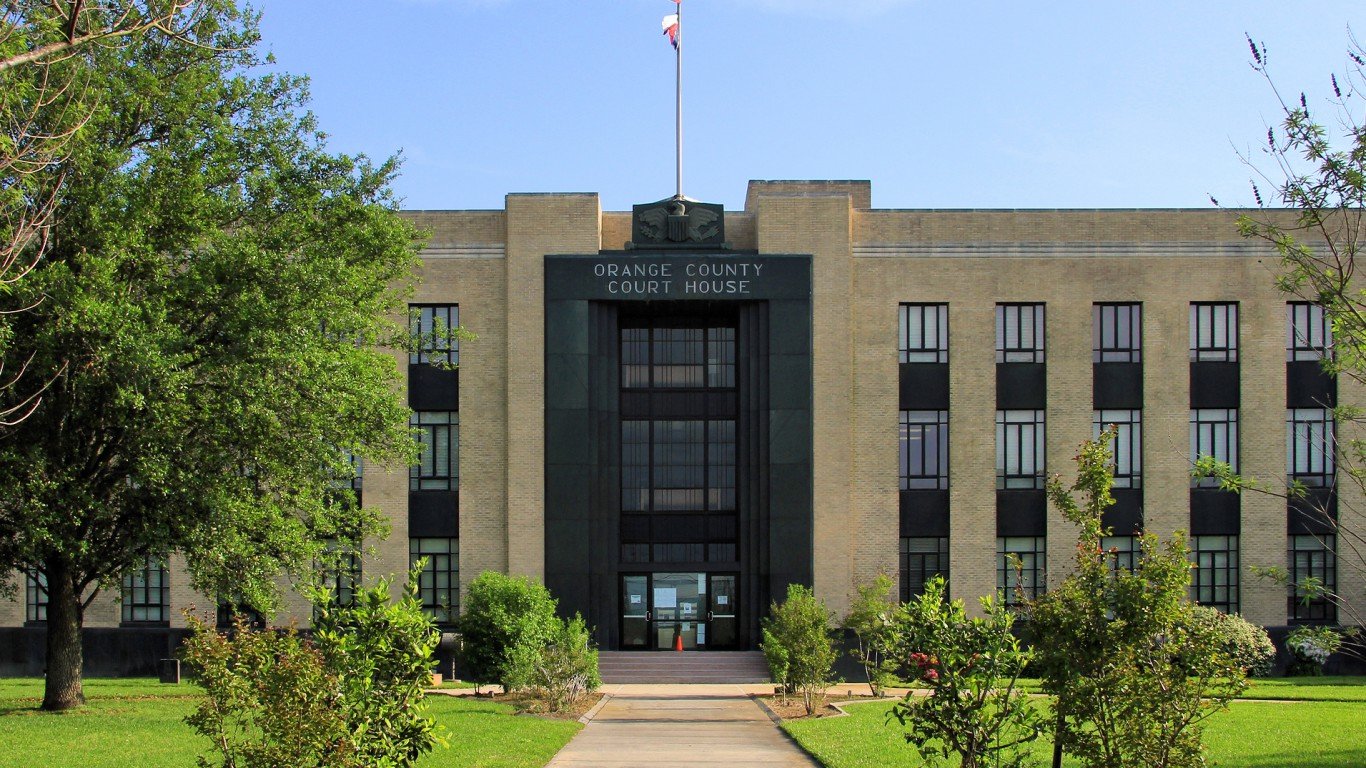
13. Lancaster County, PA
> Number of facilities contributing to toxic air: 11
> Avg daily PM2.5 concentration: 11.4 micrograms per cubic meter– #24 highest out of all counties
> Population: 543,050 — #126 largest out of all counties
> Population density: 562.07 people per square mile — #216 highest out of all counties
Lancaster County has some of the highest particulate pollution in the nation, scoring an F for particulates on the American Lung Association’s 2021 State of the Air Report. Manufacturing plants in the county that contribute to chromium and nickel air pollution include the Goodhart Sons Inc. steel fabricator, U.S. Boiler Inc., and the Precision Form machinery manufacturer. According to the 2019 Lancaster County Community Health Needs Assessment Report, Lancaster ranks eighth in the nation for residents at risk from annual levels of particulate pollution.

12. Milwaukee County, Wisconsin
> Number of facilities contributing to toxic air: 11
> Avg daily PM2.5 concentration: 8.3 micrograms per cubic meter– #1,261 highest out of all counties
> Population: 949,180 — #52 largest out of all counties
> Population density: 789.81 people per square mile — #168 highest out of all counties
A historic iron and steel industry hub, Milwaukee County is home to numerous foundries and metal manufacturers that contribute chromium and nickel air pollution including Maynard Steel Casting Corporation, Charter Wire LLC, R & B Wagner Inc., and Badger Alloys. Although PM2.5 pollution in the county is relatively low, ozone levels are consistently some of the highest in the nation, according to the American Lung Association.

11. Ascension Parish, LA
> Number of facilities contributing to toxic air: 11
> Avg daily PM2.5 concentration: 10.1 micrograms per cubic meter– #108 highest out of all counties
> Population: 125,061 — #511 largest out of all counties
> Population density: 417.91 people per square mile — #281 highest out of all counties
Nestled among Louisiana’s “Cancer Alley,” the stretch of the lower Mississippi River between Baton Rouge and New Orleans that houses over 150 refineries and petrochemical plants, Ascension Parish is one of the most toxic areas in the state. The Geismar neighborhood has one of the most concentrated industrial sections, housing multiple chemical plants including Shell Chemical and BASF. According to ProPublica, toxic emissions in the parish increased by 109% from 2008 to 2018.
10. Orange County, TX
> Number of facilities contributing to toxic air: 11
> Avg daily PM2.5 concentration: 8.9 micrograms per cubic meter– #661 highest out of all counties
> Population: 83,776 — #683 largest out of all counties
> Population density: 223.46 people per square mile — #491 highest out of all counties
Bordering Louisiana, this oil industry county has multiple petrochemical and chemical facilities including Invista Sarl and DuPont’s Sabine River Works, the latter of which releases 12 known carcinogens and recently settled with the EPA after numerous violations of both the Clean Air Act and the Clean Water Act. International Paper’s Orange Mill in the northwest corner of the county is another producer of toxic air pollution including hydrogen sulfide and formaldehyde.
9. Allegheny County, PA
> Number of facilities contributing to toxic air: 11
> Avg daily PM2.5 concentration: 12.7 micrograms per cubic meter– #11 highest out of all counties
> Population: 1,218,380 — #36 largest out of all counties
> Population density: 1,680.30 people per square mile — #74 highest out of all counties
According to PennEnvironment, a Pennsylvania state environmental group, Pittsburgh’s Allegheny County is in the top 2% of counties in the U.S. in terms of cancer risk from air pollution. A historic center of steel production – which requires the use of coke (a coal product) – the county has been plagued by air violations from multiple coke producers including U.S. Steel’s Clairton Coke Works plant, which emits benzene, naphthalene, and four other carcinogens, and was recently fined $1.8 million for hydrogen sulfide emissions.

 24/7 Tempo
24/7 Tempo






